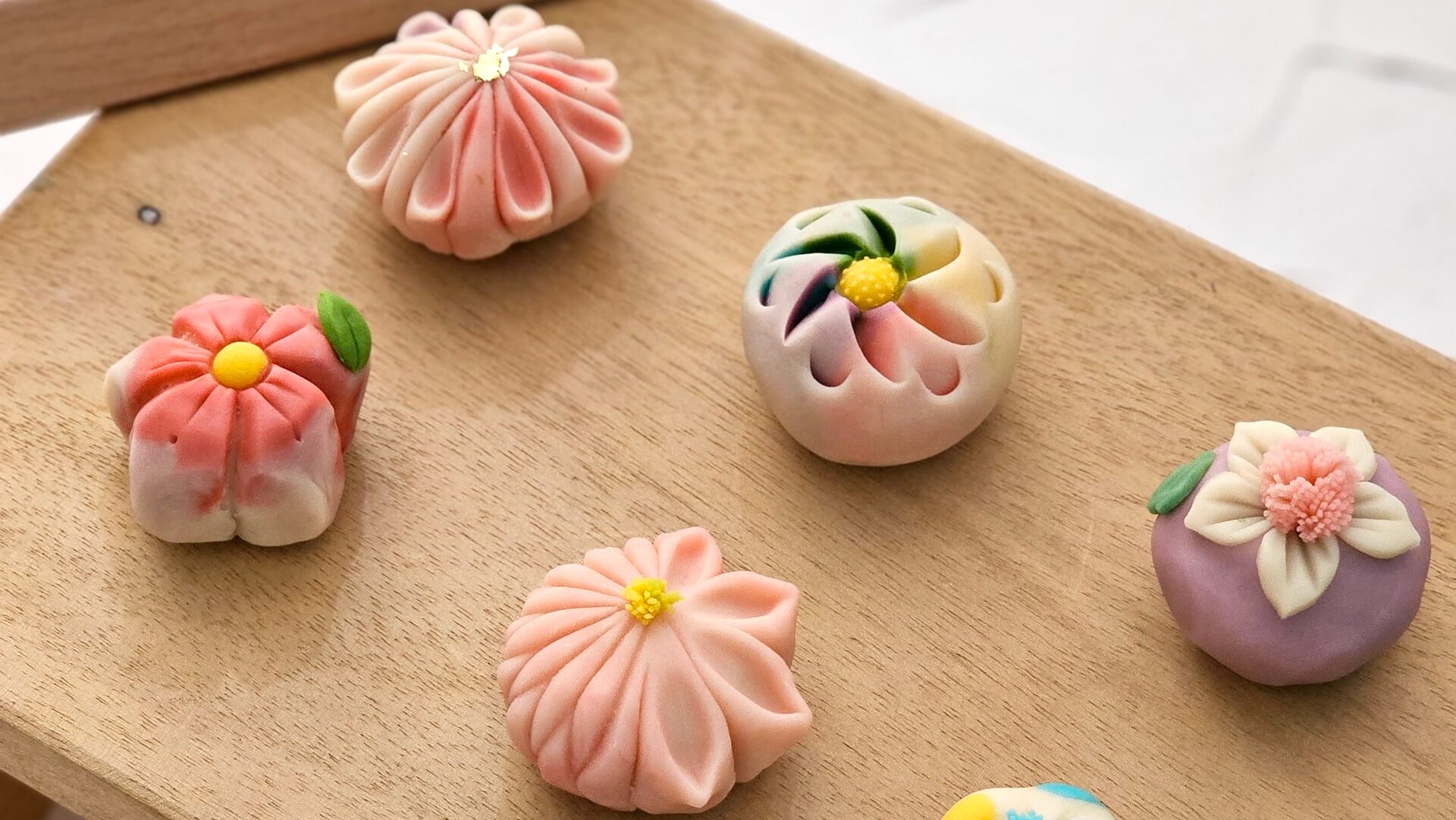
When it comes to the art of confectionery, few treats are as enchanting and culturally rich as wagashi. These traditional Japanese sweets, with their delicate craftsmanship and intricate designs, have captivated the hearts of many worldwide.
At Nanatang, we celebrate the beauty of wagashi by offering workshops to create a range of these delightful sweets, each one a testament to Japan’s rich cultural heritage. Whether you’re familiar with wagashi or just beginning to explore Japanese sweets, there’s a unique charm and story behind every piece.
Wagashi dates back to the Heian period (794-1185) when Japan began developing its unique cultural identity. Initially influenced by Chinese sweets, wagashi evolved as Japan embraced Buddhism and the tea ceremony, which significantly shaped confectionery traditions. These sweets were often made from plant-based ingredients like azuki beans, rice flour and fruits, reflecting the Buddhist dietary restrictions of the time.
Over centuries, wagashi became an integral part of Japanese culture, particularly in the Edo period (1603-1868), when it became closely associated with the tea ceremony. Pairing wagashi with matcha (powdered green tea) enhanced the tea’s flavour and created a harmonious balance between the bitter and sweet. This practice lives on today, with wagashi often enjoyed during tea ceremonies and festive occasions.
Beyond religious and ceremonial uses, wagashi also played a role in everyday life in historical Japan. Merchants and samurai would enjoy these sweets during tea breaks, often for relaxation or socialising. As Japan opened up to the world in the Meiji era (1868-1912), wagashi began to incorporate Western influences, creating new varieties that continue to evolve today.
Wagashi is more than just a dessert; it symbolises Japan’s deep appreciation for nature, aesthetics and the changing seasons. Each wagashi is meticulously crafted to reflect the beauty of the natural world, often taking the form of flowers, leaves, and other seasonal motifs. Wagashi’s colours, shapes and textures are carefully chosen to evoke the season’s essence, making each sweet a treat for the palate and the eyes.
In Japanese culture, wagashi is also associated with various celebrations and rituals. For instance, during New Year’s celebrations, people enjoy Hinamatsuri (Peach Blossom Festival) sweets shaped like cherry blossoms and dolls. Similarly, kashiwa-mochi, a type of wagashi wrapped in oak leaves, is enjoyed during Kodomo no Hi (Children’s Day) as a symbol of strength and prosperity.
The cultural significance of wagashi extends beyond just special occasions. In modern Japan, these sweets are often given as gifts of respect and goodwill. When visiting someone’s home, it is customary to bring wagashi as a token of appreciation. This practice has made wagashi an enduring symbol of hospitality and kindness in Japanese society.
The world of wagashi is as diverse as it is beautiful, with countless varieties that cater to different tastes and occasions. Here are some of the most beloved types of wagashi that you can explore at Nanatang:
To fully appreciate wagashi, one must engage all the senses. The experience begins with the visual appeal of the sweet, which often resembles a delicate work of art. As you take a bite, the texture of the wagashi reveals itself — whether it’s the chewiness of mochi, the softness of manju, or the smoothness of nerikiri. The flavour is usually subtle, with a natural sweetness that complements rather than overwhelms, allowing the essence of the ingredients to shine through.
Pairing wagashi with matcha is a traditional way to enjoy these sweets. The tea’s bitterness balances the wagashi’s sweetness, creating a harmonious interplay of flavours. Whether participating in a tea ceremony or simply enjoying a moment of tranquillity at home, wagashi offers a delightful way to connect with Japanese culture.
In addition to traditional tea pairings, modern connoisseurs enjoy wagashi with various beverages, from green tea to sake and coffee. This versatility allows wagashi to be appreciated in different contexts, whether as part of a formal ceremony or a casual snack.
At Nanatang, we invite you to explore the whimsical world of wagashi. Our studio in Singapore offers various workshops for crafting traditional Japanese sweets, each curated with cultural authenticity and expertise. Whether you’re a connoisseur of Japanese cuisine or a curious foodie, our wagashi selection will surely delight your senses.
Learn with us at Nanatang to experience the beauty and flavour of wagashi for yourself. Browse our selection and secure your spot today.